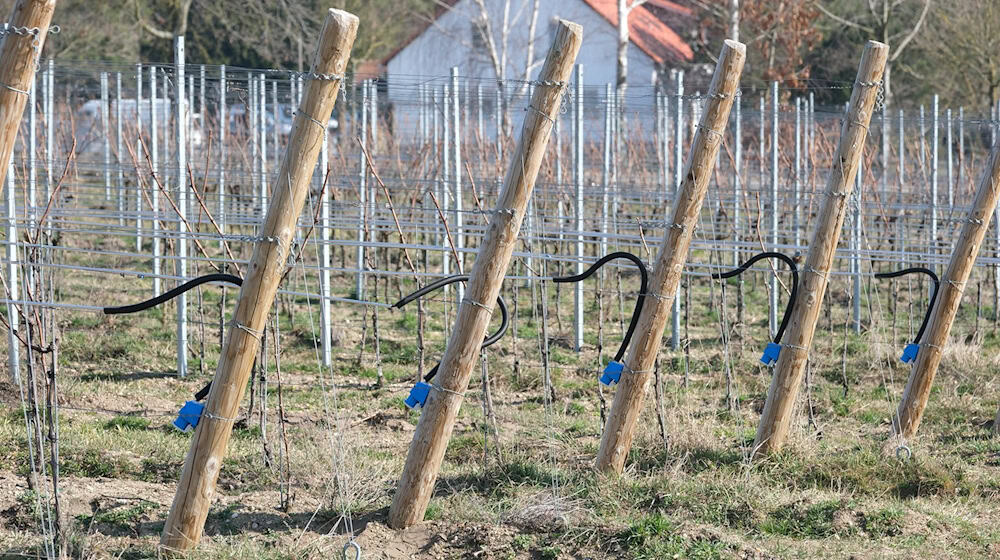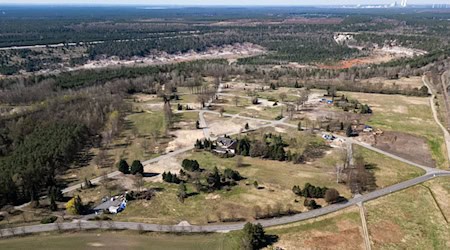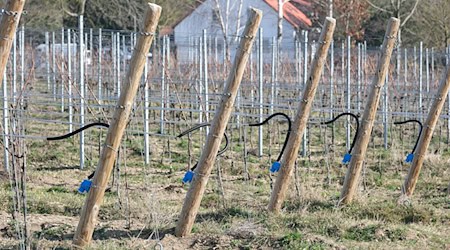The year 2024 was not a good one for winegrowing in Saxony: late frosty nights at the end of April led to major losses. "The situation is currently relaxed. It has been much colder in recent weeks and so nature is presenting itself somewhat more normally," said Felix Hößelbarth, Chairman of the Saxony Winegrowers' Association.
Enormous losses in the previous year
In the previous year, the budding of the vines had started a few weeks earlier than usual due to the mild winter. Then the late frost in the last week of April led to a considerable loss of yield in the vineyards in Saxony. Depending on the location and grape variety, it was 70 to 80 percent.
Heating wires, frost candles and frost protection irrigation can help
At the moment, there is no need for action, emphasized Hößelbarth. "You can only react when it gets really cold. The ice saints won't arrive until the first half of May." Initial experiences with heating wires, which are attached to the bending wire of the vines, are promising. Frost protection irrigation could also help.
"So far, our vines have come through the winter and the beginning of spring well," said Martin Jung from the Schloss Wackerbarth state winery when asked. The decisive factor for this year's budding is the amount of reserve material deposits resulting from the previous year's growth. "Due to the frost damage, growth in 2024 was limited to fewer shoots, but not slowed down."
The roots of the vines have little reserve material
The lower wood mass from the 2024 vegetation meant that the roots of the vines, also known as "batteries" among winegrowers, were not "fully charged" with reserve material. "In order to protect our vines and not overload them, we have therefore pruned fewer eyes this year, i.e. specifically limited the number of shoots for this wine year." However, he does not want to make any predictions about the quality and quantity for this year until the grapes are in the wine cellar.
Expert tip: timing and technique of pruning are crucial
The Radebeul winegrower Karl Friedrich Aust had good experiences with frost candles last year. "These were used in the vineyards directly at the winery and this kept losses to a minimum". He had also taken out frost insurance.
Aust had also suffered significantly fewer losses at the premium site, the "Radebeuler Goldener Wagen". "The walls there may have stored more heat and the frost was also able to drain off better due to the steep location." According to Aust, in order to prevent too early budding, the soil should be worked as late as possible, the vines should be pruned very late in young vineyards and special pruning techniques should be used in general.
Care about water deficit in the soil
Larger wineries have no technical means of protecting themselves against
late frost weather extremes, said Björn Probst, operations manager at
Weingut Schloss Proschwitz Prinz zur Lippe. "It is neither possible to light thousands of
candle fires in the vineyards at short notice, nor to install technical
equipment." However, he is optimistic. "We are currently more concerned about the water deficit in the soil. The last few months have been too dry, so we are hoping for sufficient rain in April."
Copyright 2025, dpa (www.dpa.de). All rights reserved




